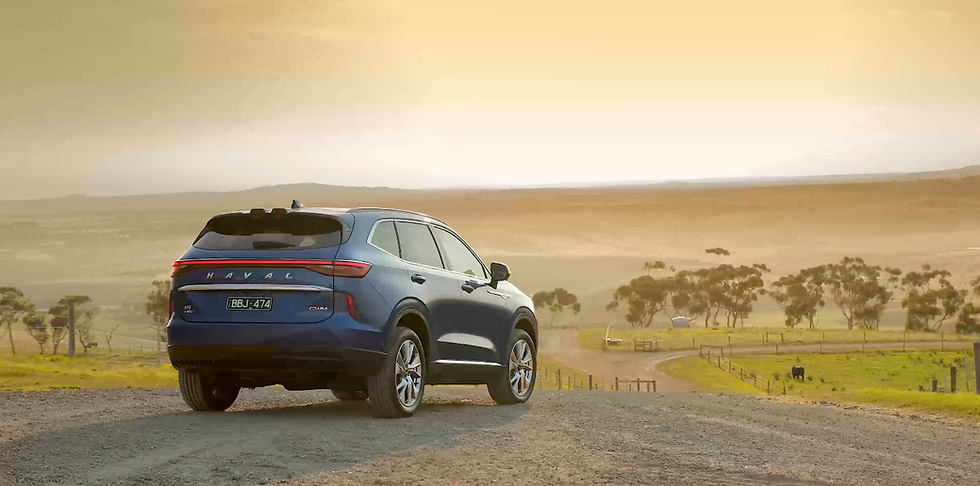Hybrid Fuel Efficiency: Are the Official Numbers a Joke or Just Wishful Thinking?
- Tim Bond

- May 5
- 2 min read
Updated: May 27
Hybrid fuel efficiency is the new battleground for car brands desperate to look green and save you cash at the bowser. But are those shiny litres-per-100km numbers on the sticker actually real? Or is there some creative accounting going on? Strap in. We’re about to call out the truth.
The Hybrid Fuel Efficiency Mirage
Every carmaker loves to brag about their hybrid’s fuel economy. Toyota claims the RAV4 Hybrid AWD sips just 4.8L/100km. GWM says the Haval H6 Hybrid will do 5.2L/100km. Honda, Nissan, Hyundai-they all throw out numbers that sound too good to be true. Spoiler: they usually are.
Manufacturers test their cars in perfect lab conditions. No traffic. No hills. No aircon blasting on a 38°C day. No kids screaming in the back. Just a rolling road, a robot driver, and a prayer. The result? Lab numbers that look great on a brochure but fall apart in the real world.

Real-World Hybrid Fuel Efficiency: The Numbers Don’t Lie
Take the Toyota RAV4 Hybrid. Official claim: 4.8L/100km. Real world? Some reviewers say you’ll see around 5.7L/100km on a normal week’s drive. (CarExpert: https://bit.ly/4iT06VJ) That’s quite a gap. The AAA’s own numbers show the RAV4 Hybrid burns 29.4% less fuel than its petrol twin in real life.
The GWM Haval H6 Hybrid deserves a nod. Official claim: 5.2L/100km. Our city test? We matched it - 5.2L/100km, right on the money. Admittedly we drove on ECO mode and didn’t use a lead foot, but still...

Most reviewers report between 6.0 and 6.6L/100km in mixed driving, which is still impressively close for a hybrid SUV of this size. It’s not just hype-the H6 Hybrid proves it can deliver strong fuel efficiency both on paper and in real-world conditions.
Some so-called “hybrids” like the Subaru Forester mild-hybrid actually use more fuel than their petrol-only versions in the real world. That’s not just disappointing, it’s embarrassing.
Why Do Hybrid Fuel Efficiency Claims Miss the Mark?
Manufacturers optimise hybrids for the test, not the road. They game the system, legally, to get the lowest possible number.
Real-world driving is messy. Stop-start traffic, hills, heavy loads, and aggressive acceleration all chew through fuel.
Battery tech and powertrain design vary wildly between brands. Some hybrids are world-class. Others are just badge engineering.
Aussie conditions are brutal. Hot weather, long distances, and rough roads make a mockery of lab tests.
Hybrid Fuel Efficiency: What’s Real, What’s Rubbish
Let’s be real. Hybrid fuel efficiency claims are a baseline, not a guarantee-but some brands are getting impressively close. Toyota still leads the pack, but even they can’t defy the laws of physics.
The standout? GWM’s Haval H6 Hybrid. In city driving, we hit the official 5.2L/100km mark - proof that strong real-world results are possible. While many rivals miss by a mile, the H6 Hybrid shows that honest, achievable efficiency isn’t just a marketing line.

The industry overall needs a reality check. Stop gaming the numbers. Start publishing real-world results. Aussie buyers aren’t mugs. We want honesty, not spin.
What's the biggest reason you don't trust Hybrid Fuel Efficiency claims
0%Lab tests don't match real driving
0%Brands exaggerate to sell cars
0%Aussie conditions are oo tough
0%I trust the numbers, they're close enough
You can vote for more than one answer.
Hybrid Fuel Efficiency: What You See Isn’t Always What You Get
Most official numbers are lab dreams, not road reality.
Expect 10–30% higher fuel use than claimed, especially in tough Aussie conditions.
Some hybrids deliver. Most don’t. Do your homework before you buy.




Thanks for clarifying. I've always thought there may be some 'truth well told'. Impressed with Haval H6.